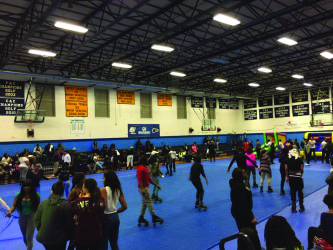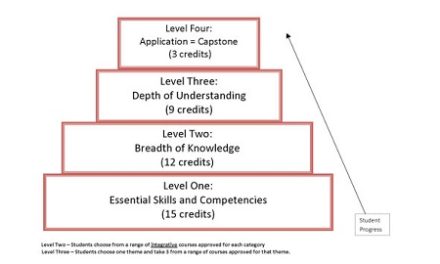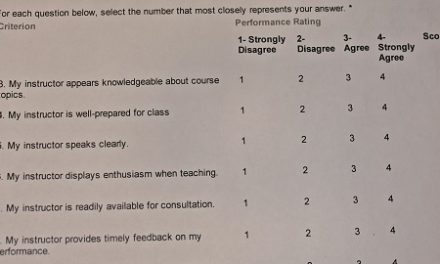Brooke Retkowski, The Whetstone
Sohomore James Cella said that Christmas time was more exciting when he was younger.
“I would write a letter to Santa Claus asking for three big presents along with a couple smaller things I wanted,†he said. “In the morning, Santa left the items wrapped under the tree and I usually got a couple of the gifts I had asked for.â€
Most students grew up being told by their parents the myth of Santa Claus, a jolly old man who delivered presents to well-behaved children the night of Christmas Eve. But as children grow older, their belief in Santa Claus disappears.
Although the belief is gone, some students said the holiday is just as fun.
There are many reasons why parents choose to have their children believe in Santa, Professor Gwen Pursell, professor of psychology, said.
She said there is at least one book that argues that belief in Santa is driven by consumerism.
“There is a lot of money to be made off of families that buy into the myth for their children to be able to experience the magical holiday,†Pursell said.
Research also claims that promoting Santa to young children reinforces important values such as gift giving and receiving, charity and consideration of others, she said. “This could possibly encourage children to be empathetic, loving, and charitable to others at a young age.â€
Freshman Kelly Palmer said she remembers her family celebrating the holiday by having a party on Christmas Eve.
“Each year we would meet at either my aunt or uncle’s house and spend Christmas Eve together as a big family,†she said. “Then we would go home and set up peanut butter Hershey kiss cookies on a plate for Santa Claus.â€
Freshman Zoee Garis said her parents often took her to see Santa Claus.
“Each year I went to sit on Santa’s lap to tell him what I wanted for Christmas along with a picture,†she said. “I usually always got what I asked for on Christmas Day.â€
Most children believe in Santa Claus up until they are out of elementary school.
Pursell said as children grow up they become logical thinkers, making them question many beliefs.
“Boys are most likely to figure out on their own that he is not real,†she said. “While girls are more likely to have been informed by someone else.â€
Sophomore Connor Davis said he found out early on that Santa Claus was not real.
“When I was in kindergarten another person in my class told me that Santa was not real,†he said. “When I asked my mom she told me Santa Claus, the Easter Bunny, even the tooth fairy was not real.â€
Palmer said she found out when she was in elementary school.
“My sister already knew and she tried her best to keep it going for me,†she said. “But I eventually figured it out.â€
Garis said Santa’s absence has not changed the way her family celebrates the season.
“I still love the holiday season as much as I did when I was a child,†she said. “I still do the same things we have always done as a family like listening to Christmas music while we decorate the tree.â€
Davis said his role has been the only thing that has changed since finding out.
“I cut down the tree and carry it into the house to be set up now, whereas before I would decorate the tree and be the one to put the star on top when we were finished,†he said.





